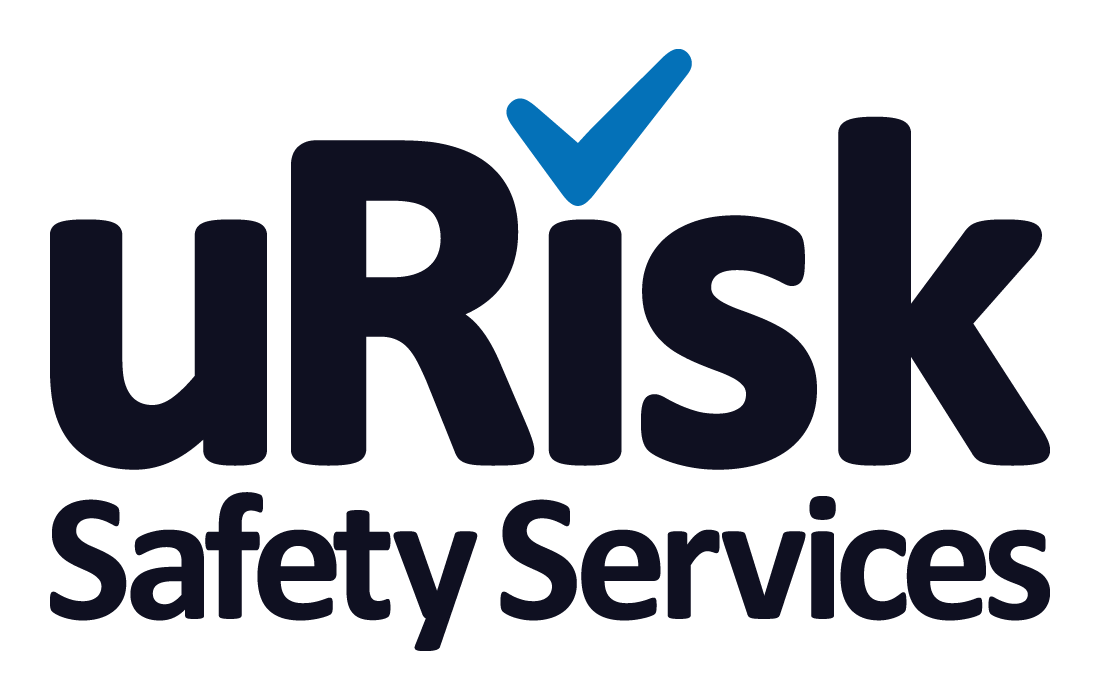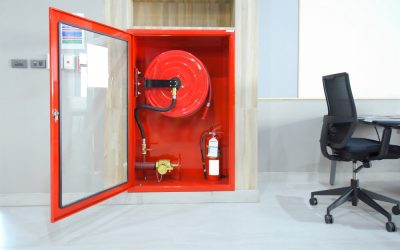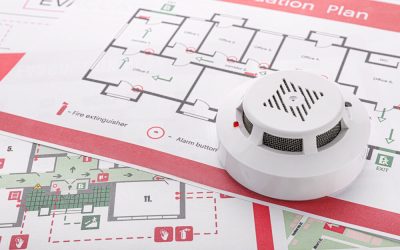Fire Risk Assessment For Flats
Your legal requirements as a landlord include taking precautions to keep your tenants safe, including when it comes to the risk of fire in flats. As part of the fire safety regulations, fire risk assessments for flats is therefore part of your legal obligation to protect residents and their guests.
The majority of fires occur in domestic dwellings. When it comes to blocks of flats, there is an additional risk to people because of the potential of fire spreading to adjoining properties. Fire safety standards for buildings of multiple occupancy therefore need to be more stringent so people who live in flats have the same levels of safety as those who live in houses.
Fire Risks in Residential Flats
The good news is that, according to the latest government statistics, in the year ending September 2023 the incidents of domestic fires decreased. This includes fires in high-rise blogs of flats which were down 5% on the previous year. The bad news is that the risk of fire is still seven times higher for people in rented or shared accommodation.
The biggest fire risk in rented properties is electrical, and as a landlord it is your responsibility to conduct an ‘Electrical Installation Condition Report’ (EICR). Under the terms of the Electrical Safety Standards in the Private Rented Sector (England) Regulations 2020 landlords are required to provide proof that the electrics meet certain standards every five years.
Your Responsibilities as a Landlord
As with every other type of rental property, your responsibilities with regard to fire safety are to ensure that residents have access to safe escape routes, that electrical wiring, sockets and fuse boxes are working safely, that any gas equipment is working safely and maintained by a Gas Safe registered engineer, that you provide and regularly test smoke alarms, provide carbon monoxide alarms in any room that has a fuel-burning appliance, and any furnishings and furniture you provide should have adequate fire resistance to meet fire safety standards and are labelled.
If you are responsible for a property that’s rented by three or more people who aren’t part of the same family – a house of multiple occupation (HMO) – you must also provide fire safety equipment such as smoke detectors, fire alarms and fire extinguishers.
Fire Hazards in Flats
Electrical hazards are a particular danger in blocks of flats, so electrical installations in common areas must be inspected and tested by a competent electrician at least every five years. Rooms and cupboards containing the electrical equipment should have fire-resistant doors and be self-closing or kept locked, and not be used for storage.
Smoking is another fire hazard, so residents and their visitors must be made aware that smoking in common areas of flats is prohibited by law. You must put at least one ‘No Smoking’ sign in the common areas, and the regular fire safety inspections should look for signs of smoking on the premises.
In addition to accidental fires, arson is a problem in rented properties, so make sure potential fire hazards such as bins and recycling bins are kept away from the building, preferably in a secure store.
Good housekeeping is an essential element of fire prevention, so your fire safety risk assessment must ensure communal areas of the block are kept free of combustible materials, meaning residents must not store belongings or furniture by flat entrance doors, on the stairs or in the hallways. Small items such as pictures, doormats and plants are acceptable, but must be taken into account in your fire risk assessment.
Powered mobility aids such as e-scooters, e-bikes and mobility scooters must not be stored in communal areas, and the guidelines are clear that “in no circumstances should charging be permitted in common areas”.
Compliance With Fire Safety Law for Small Blocks of Flats
The Home Office definition of small block of flats is defined as a purpose-built block of flats no more than three storeys, houses that have been converted into a block of flats that were “designed on the basis of a ‘stay put’ strategy, whereby, in the event of a fire in one flat, occupants of other flats are normally safe to remain within their own flats”.
Your duties are to:
- Carry out regular fire risk assessments
- Keep documentation up to date
- Make sure you implement and maintain fire safety precautions in common areas
- Engage with your tenants to make sure they understand the fire safety measures you’ve undertaken and know what to do in the event of a fire
- Coordinate with other people who are responsible for the fire safety measures
Fire Risk Assessments in Large Purpose-Built Flats
In large purpose-built flats that may have floors that cannot be reached by the fire rescue services, fire risk assessments must go beyond the ‘general fire precautions’ of small blocks of flats and other residential properties. Home Office guidelines on Fire safety in Purpose-built blocks of flats suggest that, while in smaller flats, the landlord or responsible person should carry out the assessment, for larger blocks, a comprehensive fire risk assessment would be better carried out by a professional company with specialist knowledge.
Not only will this keep residents safer, it is in the responsible person’s interests too because “the responsible person will be liable to prosecution if, as a result of an inadequate fire risk assessment, people are placed at the risk of death or serious injury in case of fire. Equally, anyone carrying out the fire risk assessment for the responsible person has the same liability.”
Under Home Office guidelines for persons with duties under fire safety legislation, it is your responsibility to ensure the fire risk assessor has adequate experience to carry out fire risk assessment of a block of flats to ensure they know the particular risks associated with them.
Professional Fire Risk Assessment for Flats
If you would like to outsource your fire risk assessment to a specialist company, contact us to get a free quote.
Legionella and Water Hygiene Blog Posts
Office Fire Risk Assessment
As you would expect, keeping your office safe from the risk of fire is a legal requirement under the Regulatory Reform (Fire Safety) Order 2005. If you are the owner or manager of a business, or landlord of an office building, it is your responsibility to ensure your...
Getting A Risk Assessment For Fire in the UK
As an employer, landlord or facilities manager, it is your legal responsibility to keep everyone who uses your premises safe. A fire risk assessment is an important part of this because it identifies what might cause a fire so you can take steps to prevent one, as...
What Is a Legionella Course, and What Does It Entail?
Training courses are an important part of any job, and not just as a way of enhancing your professional skills. Under health and safety law, learning how to keep your staff and visitors safe is a vital part of your business responsibilities, and legionella courses are...
We want to help you comply!
Landlord FAQs
What is a fire risk assessment?
A fire risk assessment is a report carried out to determine what needs to be done in a rental property to reduce fire risk. It also looks at what needs to be done to ensure tenants can safely get out of the building if a fire breaks out.
The assessment looks at factors including:
The location of smoke detectors, fire blankets, and extinguishers
Escape routes out of the building
The fire resistance of doors
Potential fire hazards (for example, flammable furniture and combustible storage)
An assessment is a legal requirement for all rental properties with communal areas. If you have five or more tenants living in your property, your fire risk assessment must be written down.
What are the penalties for not implementing fire safety measures?
As a landlord, you are responsible for your tenant’s safety in line with the Housing Act (2004) and the Regulatory Reform (Fire Safety) Order (2005).
If you are found guilty of endangering the life of your tenants, you could not only be liable for a fine or prison sentence, but you could also be banned from letting out properties in the future.
In October 2021, a building owner was found guilty of breaching the Fire Safety Order after failing to carry out a fire risk assessment on a flat above a shop. The building caught fire, with two people having to be rescued from the building as they were unable to exit the flat safely.
The landlord was sentenced to two months in prison, fined £20,000, and ordered to pay £11,500 prosecution costs.
Which rental properties need a fire risk assessment?
Properties registered as a house in multiple occupation (HMO) must have a fire risk assessment in place. This is because the fire risk in an HMO is higher, and the people living there are less likely to be acquainted, thus less likely to help each other in an emergency.
Rental properties that aren’t classified as a ‘single private dwelling’ (i.e. a property rented by the same family or friend group) and have communal living spaces like a living room or kitchen also need a fire risk assessment.
Are fire risk assessments a law required for flats?
Yes, all blocks of flats must have a fire risk assessment by law.
If your flat has more than four residents at any one time, you must have a written record of this fire risk assessment. However, even if you have less than four residents, we still recommend that your fire risk assessment is recorded in writing.
Every block of flats must have a ‘responsible person’ who is responsible for fire safety. It is their responsibility to make sure a valid fire risk assessment is carried out, and that common areas like stairwells and corridors stay safe.
Does an HMO need a fire risk assessment?
Yes. If you own an HMO, you also need to take additional precautions against the risk of fire.
For example, fire extinguishers are required on each floor in common areas, and emergency lighting is needed for buildings larger than two storeys. Regulations can vary, so we would recommend checking with your local council.
When applying for an HMO licence with your local council, you will need to provide evidence of a recent fire risk assessment.
Do I have to carry out a fire risk assessment on an unoccupied property?
Yes. This is because the risk of fire is just as likely in empty properties as it is in occupied ones.
How often do I have to get a fire risk assessment carried out?
The Regulatory Reform (Fire Safety) Order 2005 says any fire risk assessment should be ‘reviewed by the responsible person regularly so as to keep it up to date’.
The law doesn’t define what is meant by ‘regularly’ but we recommend you review your fire risk assessment at least once a year, as well as if you circumstances change.
What if I run a guest house?
If you run a guest house, holiday home, or bed and breakfast, a fire risk assessment is a legal requirement. As with landlords you will need to have an assessment carried out regularly and make visitors aware of how to exit the property in case of fire.
Are tenants responsible for fire safety?
Yes – tenants are responsible for ensuring they don’t create fire hazards. This can include blocking fire escape routes, smoking in the property, and ‘daisy-chaining’ extension leads.
If a tenant sees something they think is a potential fire risk, they need to know how to report it to you so you can fix the problem.
They also need to be aware of the fire escape plan for your property.
We recommend including all of this information in your tenancy agreement.



